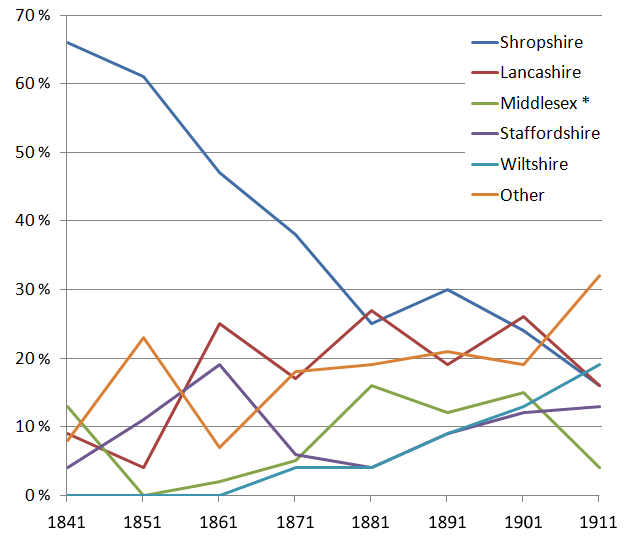“Everybody should be included in the census – all people, households and overnight visitors. It is used to help plan and fund services for your community – services like transport, education and health. Please complete your census questionnaire on 27 March 2011, or as soon as possible afterwards.” Source: 2011 census questionnaire.
Family historians do not need to be told how valuable the census is, and I suspect that there will be very few of us who have not completed the 2011 UK census by the end of today. Of course, the use of census data for planning public services is probably not what is foremost in our minds! I would imagine that most of us will today be thinking about the family historians of the future while we diligently complete our forms (on paper or online) today. The possibility that this may be the last such survey to be carried out in the UK makes it all the more important.
Why do we attach such importance to the census? Historic census returns provide invaluable help when constructing our family trees, showing (from 1851) how the people within the households appearing in them were related to each other. They also show us where and how our ancestors lived, providing snapshots of their lives at ten yearly intervals.
Census data can also be analysed to provider a broader picture when carrying out a larger project – such as the history of the Atcherley family as a whole. To give an example, here are some figures which I compiled today on the counties where the Atcherleys were staying at the time of each census from 1841 to 1911:
| 1841 | 1851 | 1861 | 1871 | 1881 | 1891 | 1901 | 1911 | |
| Shropshire | 56 | 55 | 45 | 35 | 26 | 30 | 24 | 19 |
| Lancashire | 8 | 4 | 24 | 16 | 28 | 19 | 26 | 18 |
| Middlesex * | 11 | 0 | 2 | 5 | 16 | 12 | 15 | 5 |
| Staffordshire | 3 | 10 | 18 | 6 | 4 | 9 | 12 | 13 |
| Wiltshire | 0 | 0 | 0 | 4 | 9 | 9 | 13 | 19 |
| Other | 7 | 21 | 7 | 17 | 20 | 21 | 19 | 37 |
| Total | 85 | 90 | 96 | 93 | 103 | 100 | 99 | 116 |
| * Middlesex included London until 1889 when London became a county in its own right, and took in parts of Middlesex, Essex and Surrey. For consistency, the Middlesex figures from 1891 shown above are from the same area as in previous years. | ||||||||
Even from the raw figures in the table above, it is possible to identify one significant trend: the steady decline in the Atcherley family’s presence in its native Shropshire. The trend becomes even clearer when the figures are converted to percentages (of the total number of Atcherleys recorded on each census) and plotted on a graph:

In 1841, 66% of Atcherleys included in the census were living in Shropshire. By 1911, that figure was just 16%. By that year the same percentage of the Atcherley population was living in Lancashire, while Staffordshire was home to 13% and Wiltshire, a county where no Atcherleys had lived from 1841 to 1861, topped the league table with 19%.
Now, these figures should be treated with a degree of caution. A number of Atcherleys were missed from most if not all of the censuses (or have not yet been found!), and their absences will inevitably affect the data. I will over time revisit the census data I have, refine it, and make amendments to this article. However the overall picture of the exodus of the Atcherley family from Shropshire is unlikely to change.
In fact the trend shown here continued, though probably at a slower rate, throughout the 1900s. Following the sad loss last year of Monica Atcherley (who lived at Cleobury Mortimer), it may even be the case that the 2011 census will record no Atcherleys at all in the county where the name originated.
The factors behind the emigration of the Atcherleys from Shropshire, and the stories of some of the families and individuals who relocated, will be the subjects of future articles here at Atcherley.org.uk.
